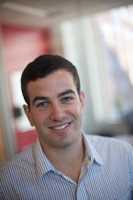26 Feb Stem Cells Vary Widely Depending on Location and Donor Age
MedicalResearch.com Interview with:
Dr. Andrew Jaffe PhD
Investigator, Lieber Institute for Brain Development
Assistant Professor
Wendy Klag Center for Autism and Developmental Disabilities
Johns Hopkins Bloomberg School of Public Health
Medical Research: What is the background for this study? What are the main findings?
Dr. Jaffe: Significant investments are being made worldwide in precision medicine, with much of the investment concentrated in the curation of stem cell lines for the generation of new tissues and organs. The most popular cell types for generating patient-specific stem cells are skin-derived and therefore receive potentially the highest amount of environmental exposure.
In our study, we were interested in characterizing the genomic variability in fibroblast cells from two locations in the body across the lifespan. The two locations were the scalp, which is exposed to the environment, and the dura mater, which is the membrane under the skull and is largely protected from environmental insult. While the fibroblast cells from these two locations look indistinguishable under a microscope, we found widespread epigenetic and expression differences between the cells related to where they came from in the body and also related, to a lesser extent, to the age of the donor.
As the field of personalized medicine continues to grow, this evidence necessitates further exploration into the epigenetic patterns in stem cells used for new tissue and organ generation. Additional research is required to determine which cells to cultivate and when, as researchers question how much epigenetic memory is actually erased when creating stem cell models.
Medical Research: What should clinicians and patients take away from your report?
Dr. Jaffe: These results may have important implications for advancing personalized medicine, particularly relating to which cells – based on their location on the body and the age of the donor – should be used for designing patient-specific therapies. The present research suggests widespread variability in the molecular signatures of fibroblast cells. We hope that our data will be used to generate new hypotheses related to improving the building blocks of personalized medicine.
Medical Research: What recommendations do you have for future research as a result of this study?
Dr. Jaffe: We are especially interested in determining the extent to which the genomic variability we have observed here in fibroblast cells will be biologically and perhaps clinically relevant in the resulting patient-specific stem cells. We at the Lieber Institute for Brain Development are well-positioned to begin to answer these questions, as we have collected hundreds of fibroblast lines from patients with brain disorders as well as from individuals that don’t have brain disorders.
Citation:
Strong Components of Epigenetic Memory in Cultured Human Fibroblasts Related to Site of Origin and Donor Age
Nikolay A. Ivanov,Ran Tao,Joshua G. Chenoweth,Anna Brandtjen,Michelle I. Mighdoll,John D. Genova,Ronald D. McKay,Yankai Jia,Daniel R. Weinberger,Joel E. Kleinman,Thomas M. Hyde,Andrew E. Jaffe
Published: February 25, 2016
DOI: 10.1371/journal.pgen.1005819
[wysija_form id=”5″]
Dr. Andrew Jaffe (2016). Stem Cells Vary Widely Depending on Location and Donor Age
Last Updated on February 26, 2016 by Marie Benz MD FAAD

